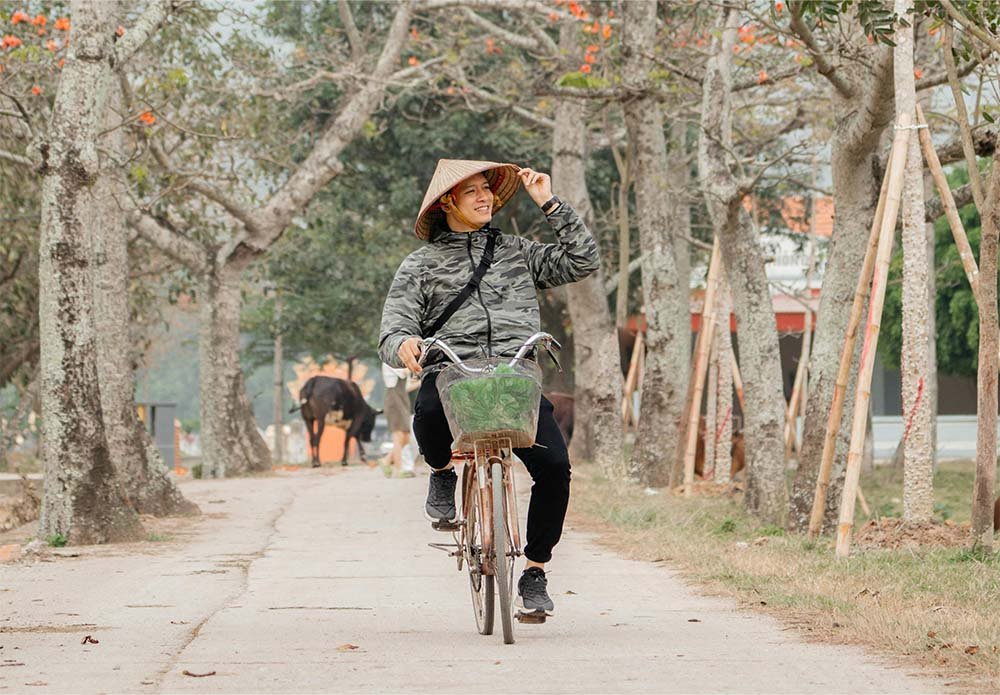Visitors Guide to Vietnam, with its rich history, breathtaking landscapes, and vibrant culture, is a country that should be on every traveler’s bucket list. Whether you’re exploring the bustling cities, relaxing on pristine beaches, or trekking through misty mountains, Vietnam offers a mix of experiences that cater to every type of traveler. If you’re planning your first trip to Vietnam, there are a few key things to keep in mind regarding places to visit, food to try, and how much your trip will cost.
What You Need to Know Before Visiting Vietnam
Before diving into the must-see places and mouth-watering dishes, it’s essential to know a few things about traveling to Vietnam. While it’s a relatively easy country to navigate, a bit of planning can go a long way in ensuring your trip is enjoyable and stress-free.
Visa Requirements
Vietnam requires a visa for most travelers. Depending on your nationality, you may be eligible for a visa exemption or a visa-on-arrival service. Alternatively, you can apply for an e-visa online, which is often the simplest method.
Currency and Budget
The official currency of Vietnam is the Vietnamese Dong (VND). Vietnam is known for being a budget-friendly destination, but your costs can vary significantly depending on your travel style. Here’s a quick breakdown of potential daily costs:
- Backpacker Budget: $20 – $30 per day
- Mid-Range Budget: $50 – $80 per day
- Luxury Budget: $150+ per day
Cash is widely accepted, but having small bills is often useful for street vendors and taxis. Major cities will have ATMs, and credit cards are accepted in larger hotels and restaurants.
Transportation
Getting around Vietnam is relatively easy. You can travel by bus, train, domestic flights, or even rent a motorbike. The train system is a great way to see the countryside. However for long distances, budget airlines like VietJet and Bamboo Airways can save you time. For inner-city travel, Grab (a ride-hailing app) is convenient and affordable.
Language
The official language is Vietnamese, but many locals in tourist areas speak English, especially in hotels, restaurants, and shops. Learning a few basic phrases like “xin chào” (hello) and “cảm ơn” (thank you) can be helpful and appreciated by locals.

Must-See Places in Vietnam
Vietnam is a diverse country with attractions ranging from UNESCO World Heritage Sites to vibrant cities. Here are some of the best destinations you shouldn’t miss.
1. Hanoi
As the capital city, Hanoi is a bustling metropolis that perfectly balances modernity and tradition. Wander through the chaotic streets of the Old Quarter, explore ancient temples, and sip on Vietnamese coffee at a sidewalk café.
- Top Attractions: Ho Chi Minh Mausoleum, Temple of Literature, and the bustling night markets.
- Accommodation: Budget travelers can find hostels for as little as $10 per night, while mid-range hotels range from $30 to $50.
2. Ha Long Bay
A UNESCO World Heritage Site, Ha Long Bay is famous for its emerald waters and thousands of towering limestone islands comparatively. A cruise is the best way to explore the bay, where you can visit hidden caves, go kayaking, and enjoy fresh seafood.
- Best Time to Visit: October to April, when the weather is cooler and dry.
- Cost: Cruises vary widely, but budget options start around $50 for a day trip, while overnight cruises can cost $150+.
3. Hoi An
Hoi An is a charming ancient town known for its well-preserved architecture, tailor shops, and lantern-lit evenings. It’s a great place to relax, take a cooking class, and soak up the local culture.
- Must-See Spots: Japanese Covered Bridge, Hoi An Ancient Town, and An Bang Beach.
- Accommodation: A homestay or boutique hotel can cost $20 – $40 per night.
4. Ho Chi Minh City (Saigon)
Ho Chi Minh City, the largest city in Vietnam, is known for its French colonial architecture and vibrant street life. Visit the War Remnants Museum, explore Ben Thanh Market, and enjoy a motorbike ride through the chaotic traffic.
- Key Attractions: Notre-Dame Cathedral Basilica, Cu Chi Tunnels, and the bustling Saigon River.
- Accommodation: Budget options can be found for $10 – $20, with mid-range hotels starting at $40.
5. Sapa
Sapa is located in northern Vietnam, known for its terraced rice fields and ethnic hill tribes. A trek through the mountains offers stunning views and the chance to experience traditional rural life.
- Best Time to Visit: The rice terraces are most beautiful from May to September.
- Accommodation: Stay in a homestay with local families for an authentic experience (around $15 – $30 per night).
Vietnamese Food You Must Try
Vietnam’s cuisine is a highlight of any visit, offering a wide range of flavors and dishes. From street food to fine dining, here are some must-try Vietnamese foods.
1. Pho
Pho is Vietnam’s most famous dish—a flavorful noodle soup made with beef or chicken. You’ll find it everywhere, from street stalls to high-end restaurants. The broth is simmered for hours and typically served with fresh herbs, lime, and chili on the side.
2. Banh Mi
The Vietnamese sandwich, Banh Mi, is a fusion of French and Vietnamese cuisine. It’s made with a crispy baguette and stuffed with ingredients like grilled pork, pâté, cucumber, and pickled vegetables.
3. Bun Cha
A Hanoi specialty, Bun Cha consists of grilled pork served with vermicelli noodles, fresh herbs, and a dipping sauce. It’s often accompanied by a side of fried spring rolls.
4. Goi Cuon (Spring Rolls)
Goi Cuon, or fresh spring rolls, are made with rice paper and filled with shrimp, pork, herbs, and vermicelli. These healthy and light rolls are usually dipped in peanut sauce.
5. Ca Phe Trung (Egg Coffee)
Egg Coffee, or Ca Phe Trung, is a unique Hanoi delicacy made with whipped egg yolks, sugar, and condensed milk. It’s a creamy and sweet treat that’s unlike any coffee you’ve tasted before.
Cost of Traveling in Vietnam
Vietnam is undoubtedly one of the most affordable destinations in Southeast Asia. Here’s a rough breakdown of daily expenses:
Accommodation Costs
- Hostels: $5 – $15 per night
- Budget Hotels: $20 – $40 per night
- Mid-Range Hotels: $50 – $80 per night
- Luxury Hotels: $150+ per night
Food Costs
- Street Food: $1 – $3 per meal
- Local Restaurants: $5 – $10 per meal
- Western Restaurants: $10 – $20 per meal
Transportation Costs
- Local Bus: $0.50 – $1 per ride
- Motorbike Rental: $7 – $10 per day
- Taxis (Grab): $2 – $5 for short distances
- Domestic Flights: $30 – $100, depending on the route and booking time
Entertainment Costs
- Entrance Fees: $1 – $10 (museums, temples, etc.)
- Tours and Excursions: $20 – $50 for a day tour
Essential Visitors Guide to Vietnam
- Weather: Vietnam has a tropical climate, Therefore pack accordingly. If you’re visiting the north in winter (December to February), be prepared for colder temperatures.
- Safety: In addition to Vietnam is also generally safe, but be cautious of petty theft, especially in tourist-heavy areas. Use common sense, avoid carrying large amounts of cash, and always be aware of your surroundings.
- Cultural Etiquette: Respect local customs, For example: dressing modestly when visiting temples. But always remove your shoes before entering someone’s home or certain places of worship.
- Health: In conclusion Make sure you have travel insurance, and most importantly consider vaccinations for diseases like hepatitis A, typhoid, and malaria, depending on where you’re traveling.
Q&A: Finally Commonly Asked Questions About Traveling to Vietnam
Q: Is Vietnam safe for solo travelers? A: Yes, Vietnam is considered a safe destination for solo travelers. Besides this the locals are generally friendly, and violent crime is rare. However, solo travelers should still practice caution and be aware of their belongings in crowded places.
Q: How long should I stay in Vietnam? A: A two-week trip is perfect for exploring the key highlights of Vietnam, including Hanoi, Ha Long Bay, Hoi An, and Ho Chi Minh City. If you want to explore northern or southern regions more in-depth, consider staying for three weeks.
Q: What is the best time to visit Vietnam? A: The best time to visit depends on the region. Northern Vietnam (Hanoi, Ha Long Bay) is best from October to April. Central Vietnam (Hoi An, Hue) sees its best weather from February to May, while southern Vietnam (Ho Chi Minh City, Mekong Delta) is ideal from November to April.
Q: Do I need vaccinations to travel to Vietnam? A: Vaccinations for hepatitis A, typhoid, and tetanus are recommended. Depending on the area, similarly, you may also consider malaria prevention measures. Always consult a healthcare provider before traveling.

